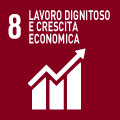- Docente: Niko Samuli Jaakkola
- Crediti formativi: 8
- SSD: SECS-P/01
- Lingua di insegnamento: Inglese
- Modalità didattica: Convenzionale - Lezioni in presenza
- Campus: Forli
- Corso: Laurea in Economia e commercio (cod. 9202)
Conoscenze e abilità da conseguire
The aim of the course is to introduce students to the basic methods and topics of macroeconomic analysis and to ensure their understanding of macroeconomic equilibrium in closed and open economies. At the end of the course students are able to: (a) define the main macroeconomic variables; (b) understand the determinants of aggregate demand and aggregate supply, and of macroeconomic equilibrium in the short and in the long run; (c) understand the motivation of fiscal and monetary policy and the role of expectations in influencing their impact on the economic system.
Contenuti
PART 1: Macroeconomics in the long run and economic growth
Introduction
Introduction to Macroeconomics
Data and models
GDP
Classic theory: the economy in the long run
The long run
Income production, distribution and expenditure
Equilibrium in the goods market and in the financial market
The monetary system
Inflation
Costs of inflation
Open economy: trade balance and net capital outflows
Open economy: real and nominal exchange rate
Unemployment
Labor market reforms in Europe and in Italy
Growth theory: the economy in the very long run
Economic growth and the Solow model: capital accumulation, steady state, policy, golden rule, population dynamics, technological progress, empirics, growth enhancing policies
Endogenous growth
3 Exercise lessons:
(1) Introduction, Long run
(2) Money, inflation, open economy
(3) Unemployment, growth
PART 2: Macroeconomics in the short run and economic policy
Business cycle theory: the economy in the short run
Introduction to short run fluctuations: AD-SRAS-LRAS IS-LM model
Economic policy, shocks, IS-LM and AD
Great depression, Japanese stagnation, Great recession, and European sovereign debt crisis
Fiscal and monetary policy in the EU since the Great recession
Mundell-Fleming model
International financial crises
Aggregate supply and Phillips curve
Adaptive and rational expectations
The debate on macroeconomic policy
Stabilization policy
Debt and deficit
Financial system: opportunities and dangers
3 Exercise lessons:
(4) The closed economy in the short run
(5) The open economy in the short run, dynamic macroeconomics
(6) Economic policy
The two parts will be assessed separately as partial exams. The full exam covers both parts.
Testi/Bibliografia
The main textbook for the course (necessary material) is
N. Gregory Mankiw, Macroeconomics - International Edition, 10th edition, Macmillan, 2019.
Recent editions (e.g. the 9th edition, 2016) of the same text are similar and should be fine.
A few short articles may be included and will be indicated by the first lecture.
Metodi didattici
Lectures and exercise classes.
Students are encouraged to prepare for the lectures beforehand, by:
- watching short-prerecorded video lectures, and/or reading the textbook chapter;
- possibly reading a short article prior to the lecture.
An online quiz tests the students' understanding of the pre-lecture material.
Modalità di verifica e valutazione dell'apprendimento
Examination (Partial or Full). The examination consists of two essays and on oral examination. The first partial consists of a short essay. The second partial consists of a longer essay and an oral examination (on the essays and on other material otherwise. A final examination consists of two essays and an oral examination.
The grade is determined as the weighted sum of the grades for the two partials, or as the grade of the total exam. The short essay has a weight of 20%; the long essay 50%; and the oral exam 30%.
Short exercises will be assigned during the course; completing and returning these on time yield additional marks. If you are completing the module without attending, please get in touch by email for an alternative means of getting the additional marks.
Grading:
18-21: The student has a basic understanding of many macroeconomic concepts and is mostly able to explain their relations and how they are determined.
22-24: The student understands the macroeconomic concepts covered and is able to explain their relations and how they are determined. The student is partly able to use the methods and material to understand macroeconomic events and policies.
25-27: The student has a solid understanding of macroeconomic concepts. The student can mostly use the theoretical methods to analyse macroeconomic events and policies, and is mostly able to relate the material to empirical evidence.
28-30: The student has an excellent command of the material and is able to analyse macroeconomic events and policies using the methods of the course, and can relate the theoretical material to empirical evidence.
30 with lode: The student masters both the analytical framework and how it connects to empirical evidence. The student is able to apply the methods of analysis to novel settings.
Strumenti a supporto della didattica
Lectures slides, short videos and additional reading will be made available in advance on the e-learning web platform.
Orario di ricevimento
Consulta il sito web di Niko Samuli Jaakkola
SDGs

L'insegnamento contribuisce al perseguimento degli Obiettivi di Sviluppo Sostenibile dell'Agenda 2030 dell'ONU.
